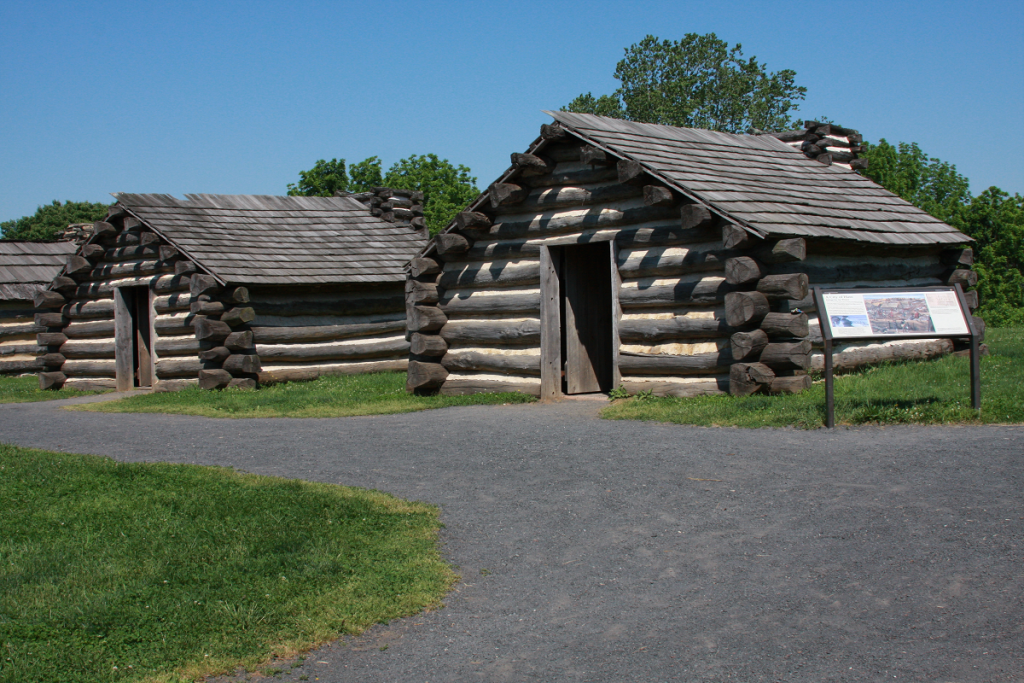May 31, 2022 @ 09:00 EDT
Site Visit #31
In December 1776, only five and a half months after the United States declared that it now existed, General George Washington brought the ragged remains of his army across the Delaware River from New Jersey into Pennsylvania, escaping British pursuit. The weather was bitterly cold and the army lacked just about everything. For many, their enlistment was up in just over a week. The army had lost New York City to the British and been beaten in every battle across New Jersey.
While camped, Washington conceived an insane plan. He would recross the Delaware River on the evening of Christmas Day and attack Hessian mercenaries in nearby Trenton. The army’s surprise attack was very successful and was followed up by a win in Princeton. These were the high points of 1777 as the latter half of the year reverted to failure and the loss of Philadelphia.
As school kids, we learned of Valley Forge as a place where the United States Army suffered a cold winter. In my mind, I had envisioned it as a repeat of 1776, with soldiers freezing in makeshift tents with little provisions, but this time there was no great victory such as Trenton was.
Today I learned how right – and wrong – I was.
Indeed, the army came into the area around the village of Valley Forge lacking food, clothing, and other necessities of life and war. Unknown to me, many had their families following the army, who were suffering as badly.
The army immediately took to building what eventually amounted to a complete village, with hundreds of log cabins to provide shelter. Redoubts were built and a defensive perimeter was established. The population swelled to 12,000, making the Valley Forge encampment the fourth largest city in the country – for six months.
I see the word “valley” and presumed that the encampment was in a valley. Fortunately, George Washington was a little smarter than I am, and the main encampment was built on the high grounds above the actual town and furnace that comprised pre-encampment Valley Forge. George Washington had his headquarters in that valley along the creek, but the troops stayed on the high ground where they could see many miles in all directions.

Another thing I learned today was that the “winter” encampment lasted until mid-June. During this time, a Prussian officer – Baron von Steuben – arrived at the camp. He found a disorganized force comprised of various units from the many states, all having received different training – if any. With Washington’s blessing, he began training the troops in the Prussian methods of warfare and discipline. Simple things like marching in formation, loading and firing on command, and such were instilled in the troops. Von Steuben kept notes on his training methods and wrote a manual on training. Parts of his manual are still used in the U.S. Army today.
Von Steuben also offered advice on improving sanitation and fixing supply issues. Disease claimed many lives over the winter and von Steuben’s suggestions – like moving the latrines far away from living and eating areas – paid off. Another “I didn’t know that” was the smallpox issue. Smallpox was one of the many diseases confronting the troops and their families. A viable vaccine was still 20 years away, but there was another method of inoculation known at the time. Washington ordered that all troops be so inoculated, and at the end of the encampment, there were only 50 deaths from the contagious disease.
It was during the stay at Valley Forge that France officially recognized the independence of the United States and began offering aid to the army. This development caused the British much annoyance! They pulled some troops from the U.S. to defend their Caribbean holdings. With a smaller force in the middle states, the British abandoned Philadelphia and headed back to New York City.
That was the moment that Washington decided to march his troops out of Valley Forge and pursue the British. They met at Monmouth, New Jersey; the newly trained Continental army against the British regulars. The battle lasted for several hours on a brutal summer day, with the British finally withdrawing from the battlefield and continuing back to New York. The Continentals had held their own against the British. Unfortunately, three more years of war faced the nation, with an emphasis changing to the southern states.
A brand new Visitor’s Center sits at the entrance to Valley Forge National Historical Park. A lot of information about the encampment and times, in general, is presented through posters, diagrams, and interactive media. Head upstairs and out the upper-level doors, hang a left, and head into a separate theater building. Here I watched a well-produced 20-minute movie about events leading to Valley Forge, and life during the encampment.
The park offers a driving tour over the 3,500-acre park. Nine different stops are highlighted on the 10-mile route. As with many of the other parks I have visited, there is an audio component to the tour, but this park used a system where you actually call a phone number, enter the stop number, and listen to a description. It worked fairly well except where cell coverage cut out!
The auto tour took around two hours, as I took some time for a closer look at a few of the stops. I probably did more walking here than I have in a long time – and it felt good!
After visiting three Civil War sites at the start of this trip, I’m now in the midst of Revolutionary days. Hopewell Furnace, visited two days ago, had supplied cannon and tools to the Continental Army. Tomorrow I head to downtown Philadelphia and Independence Hall.
Steve